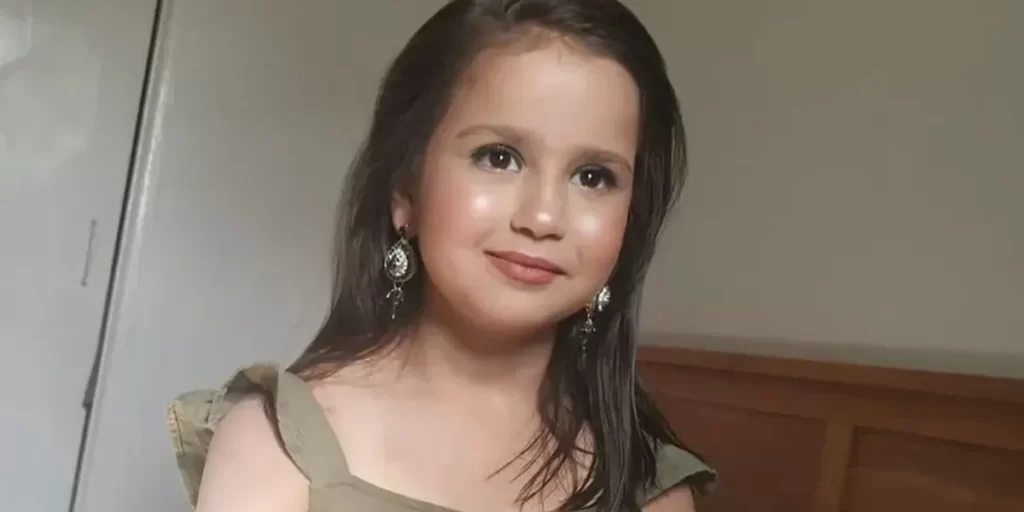Sara’s Bruises Were Seen. Her Screams Were Heard. So Why Was Nothing Done?
The case of Sara Sharif’s horrific abuse and murder is a damning indictment of a child protection system that has once again failed a vulnerable child. Sara’s story is not just a tragedy, it is an urgent call for society to reassess its priorities when it comes to protecting children. The details of Sara’s suffering are almost too painful to comprehend. Over a period of two years, she was subjected to relentless violence at the hands of those who should have loved her most, her father, Urfan Sharif, and stepmother, Beinash Batool. The cruel litany of abuse included beatings, burns, and unimaginable neglect that ultimately culminated in her death at just ten years old.
How did it come to this? How did a young girl slip so completely through the net of those tasked with her protection?
Sara’s death was not an isolated or unpredictable event. It followed years of systemic failure at every level, social services, the family courts, law enforcement, and the education system. From the moment of her birth, Sara was known to the authorities. Her father, Urfan Sharif, had been flagged as a risk years before she was even born. Social services were repeatedly involved with the family due to concerns of domestic abuse and child neglect. Police were aware of incidents of violence in the household. The family courts, despite hearing allegations of abuse, awarded custody of Sara to her father and stepmother in 2019. At every juncture where intervention could have made a difference, the system faltered.
The failures in this case were not due to ignorance but inaction.
Perhaps one of the most chilling aspects of Sara’s case is how visible her suffering should have been. Her primary school teachers noticed bruising on her face as early as June 2022. By March 2023, more injuries were apparent, and a referral to social services was made. Yet, despite these warning signs, the case was inexplicably closed with no further action taken. Shortly afterward, Sara was withdrawn from school to be home-schooled, effectively hidden from the outside world. This was a critical moment, a final opportunity to intervene and save her life. Instead, it was missed, and Sara became invisible.
The failures in this case were not due to ignorance but inaction. Those who should have acted – teachers, social workers, and the courts – were operating within a system that prioritises bureaucracy and caution over the safety of children. Sara’s bruises were seen, her screams were heard, yet nothing was done. How is this possible? How many children need to suffer, or worse, die, before we stop worrying about stepping on toes and start prioritising their lives?
The sentiment that it is “better to ask forgiveness than permission” is especially relevant here. When it comes to protecting children, hesitation can be deadly. If there is even an inkling of harm being done, immediate action must be taken. Too often, professionals tasked with safeguarding children err on the side of caution for fear of legal repercussions or being accused of overstepping boundaries. This fear, however, comes at the expense of the child’s safety. It is a fear that must be eradicated. Protecting children cannot be secondary to bureaucratic procedure.

In Sara’s case, there were too many missed opportunities and too many unanswered questions. Why were previous concerns about her father’s violent history not adequately considered? Why was custody awarded to a man who was clearly unfit to care for a child? Why was the school’s referral to social services dismissed without thorough investigation? These questions reflect the profound weaknesses in a child protection system that were highlighted by the Children’s Commissioner, Dame Rachel de Souza. Sara’s murder, she argued, was the result of a system that allowed her to fall “off the radar” entirely.
There must be accountability for what happened to Sara. It is not enough to express shock or vow that this will never happen again. We have heard those promises before, after the deaths of children like Peter Connelly (Baby P), Victoria Climbié, and Arthur Labinjo-Hughes. Yet here we are, mourning another child who was let down in the starkest of ways.
Systemic changes must follow, and a better oversight of children who are withdrawn from school to be home-schooled. While home education can be a positive choice for some families, it must not be used as a shield to conceal abuse. Sara’s withdrawal from school in April 2023 should have triggered immediate scrutiny from authorities.
There needs to be a cultural shift within social services and child protection agencies. The fear of overstepping must be replaced by a relentless commitment to the safety of children. It is better to investigate and find nothing than to hesitate and risk losing a life. Children like Sara cannot advocate for themselves, they rely on adults to be their voice, their shield, and their safety net.
Why were previous concerns about her father’s violent history not adequately considered?
Sara’s story, and the children that went before her, should haunt us all. Her bright smile, her laughter, and her spirit were extinguished by a cycle of abuse that was preventable. We owe it to every vulnerable child, to learn from this failure. No child should ever be left invisible, unheard, or unprotected. The system must change, we cannot wait for another inquiry or review, it has to happen NOW. Because when we say “never again,” we have to mean it.
Subscribe to The FEMCAST and help us bring these critical stories to light. Each listener, each voice, and each story makes a difference. Together, we can break the silence.
If you enjoy my content and would like to support our research and work, consider buying me a coffee (by clicking links below). Your contribution helps me continue creating this content. Thank you for your support!






